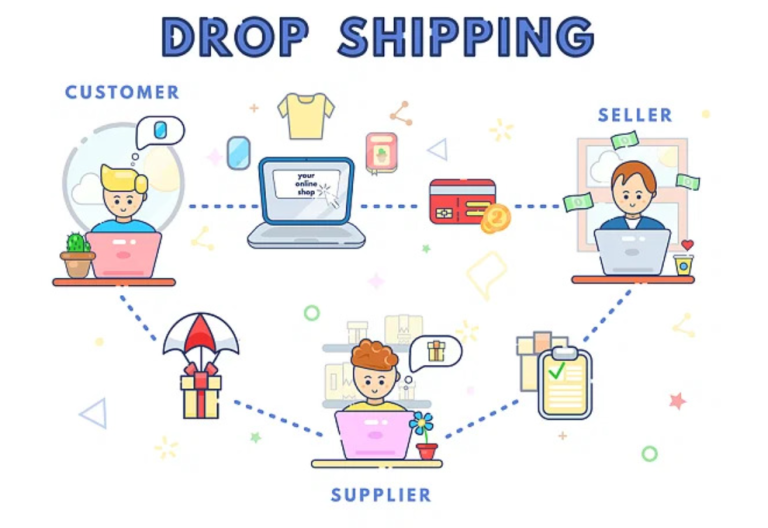Dropshipping: An Overview
Dropshipping is a business model in which a company sells products to customers without maintaining an inventory. Instead, the company partners with a supplier who holds the inventory and ships the products directly to the customers on behalf of the company.
This allows the company to offer a wide range of products without the need for large amounts of capital to purchase inventory, and without the need for warehouse space to store it.
Advantages of Dropshipping
There are several advantages to using a TopDawg dropshipping business model. One of the main advantages is the low cost of entry. Since the company does not need to purchase inventory upfront, the startup costs are much lower compared to a traditional brick-and-mortar store or an e-commerce store that holds inventory. Additionally, since the supplier is responsible for storing and shipping the products, the company does not need to worry about those costs either.
Another advantage of dropshipping is the ability to offer a wide range of products without the need for large amounts of capital. Since the company does not need to purchase inventory upfront, it can offer a wide range of products from different suppliers, which can attract a wider range of customers.
Finally, dropshipping allows for flexibility in terms of location. A company can operate from anywhere, as long as it has a reliable internet connection, making it easy to scale and expand the business.
Disadvantages of Dropshipping
While there are several advantages to dropshipping, there are also some disadvantages to consider. One of the main disadvantages is the lack of control over the product and customer experience. Since the supplier is responsible for storing and shipping the products, the company has little control over the quality of the products or the shipping times. This can lead to customer complaints and negative reviews, which can harm the company’s reputation.
Another disadvantage is the potential for longer shipping times. Since the products are shipped directly from the supplier to the customer, it can take longer for the customer to receive the product. This can lead to customer complaints and negatively impact customer satisfaction.
Finally, dropshipping can be more competitive than traditional business models. Since the barrier to entry is low, there can be a large number of companies offering similar products, which can make it more difficult to stand out and attract customers.
Types of Dropshipping Companies and Suppliers
There are several types of dropshipping companies and suppliers, each with their own unique advantages and disadvantages.
Manufacturer Dropshipping: This type of dropshipping involves working directly with the manufacturer of the products. This can lead to lower prices and higher profit margins, but it can also be more difficult to find manufacturers that are willing to work with small companies.
Wholesale Dropshipping: This type of dropshipping involves working with a wholesaler who purchases products in bulk from the manufacturer and resells them to the company at a lower price. This can be a good option for companies that are just starting out, as it can be easier to find wholesalers that are willing to work with small companies.
Retail Dropshipping: This type of dropshipping involves working with a retail store that already has a large inventory of products. The retail store will then ship the products directly to the customer on behalf of the company. This can be a good option for companies that want to offer a wide range of products without the need for large amounts of capital.
How to find a good Dropshipping Supplier
Finding a good dropshipping supplier is crucial to the success of a dropshipping business. Some key things to consider when looking for a supplier include the quality of their products, their shipping times, their pricing, and their customer service.
- Research: Researching different suppliers and their products is important to find the right fit for your business. This can be done by reading reviews of the suppliers, looking at their website, and contacting them directly to ask questions.
- Quality of Products: It is important to ensure that the products offered by the supplier are of good quality. This can be done by requesting samples, reading reviews, and looking at the supplier’s return policy.
- Shipping Times: A supplier’s shipping times can have a big impact on customer satisfaction. It’s important to find a supplier that can ship products quickly and efficiently to meet your customer’s expectations.
- Pricing: The pricing of the supplier’s products should be competitive, and in line with your business model. It’s important to factor in the cost of the products, shipping, and any additional fees to ensure that you will make a profit.
- Customer Service: A good supplier should have good customer service and be easy to communicate with. It’s important to find a supplier that is responsive and willing to work with you to resolve any issues that may arise.
- Check supplier’s certifications and reputation: Before making any deal with supplier, check their certifications and reputation in the market. It is important to ensure that supplier is trustworthy and has good reputation in the market.
By considering these factors, you can find a reliable and trustworthy dropshipping supplier that can help your business thrive. Remember, a good supplier can be a valuable partner in your business and a bad supplier can cause you and your customers a lot of headaches.

